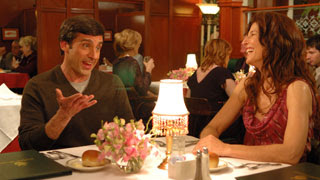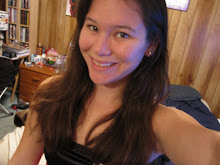English 313 Th 4:20
Professor Wexler
16 December 2008
Through time, the role of the woman within society and family tends to fall into the popular stereotypical view. However, despite the popular beliefs of what a woman should be in these roles, a few women have broken barriers to become the more liberal females. Instead of being the ones who meekly follow their husbands in subservient roles, these women are daring and often racy in their own rights.
To start looking at these different women portraying the same role, one could examine Tennessee Williams’ Maggie in Cat on a Hot Tin Roof and Henrik Ibsen’s Maggie from A Doll’s House. Both women are able to keep their houses stable while trying to support their family in the present as well as the future. While the portrayal of these two women is often times a role reversal of traditional notions of what the woman’s role should be, they are different in the way they break away from tradition.

Maggie often plays the cat in heat; whereas, Nora plays the timid mouse with a strong backbone. Maggie tries to seduce her own husband and offers him a shoulder to lean on physically and metaphorically. Brick gets hurt jumping the hurdles because “people like to do what they used to do, even after they’ve stopped being able to do it” (Williams 44). Maggie tries to care for Brick by offering to help him move around when he drops his crutch. Similarly, Nora tries to take care of her husband Torvald when he becomes sick by taking him away from the stress of their current lives. In both of these situations Simone De Beauvoir would argue that the women are getting their role from the male, such as in a master slave relationship. They are acting on the values that have been ingrained in their psyche as the role of the women in a marriage, that they need to take care of their man when he is down to ensure they recover quickly and then will be able to take over the role once again as the provider.
Ferdinand Saussure’s “Course on Linguistics” can be applied to say in conjunction with De Beauvoir that the values of a traditional wife/mother are a sign and signifier relationship. We hear “wife” and “mother” and automatically get an image of the homemaker. Saussure says the “sign unites, not a thing and a name, but a concept and a sound-image” (78). When the audience is taking in both Cat on a Hot Tin Roof and A Doll’s House, they come to the plays with ideas of a “good” wife as “domestic, attractive, home-centered” (Barker 307) and a “good” mother who provides for the children and watches over them. When they see Nora and Maggie on the stage they are satisfied and shocked because these characters do not always conform to the audience’s ideas. Maggie and Nora are the signified aspects of the sign; whereas the concept of the mother/wife is the signifier. It is the crashes between traditional values and what is being performed that make the audience reject the characters because of their behavior. Maggie is then called a bitch because of the way tries to better her family’s future and she presents herself as a “sneak, cheat, manipulative” (Barker 307). Nora on the other hand is a Barker’s decoy an “apparently helpless, actually strong” (307) for part of the play while she plays a victim for the later half because of her guilt.

De Beauvoir points out that the woman plays a different role in the master-slave relationship than the “normal” slave, “she is the Other in a totality of which the two components are necessary to one another” (Beauvoir). Both Nora and Maggie are important to the future of their family because without them, the men would not be able to procreate. For Maggie however, it is more important for her to have children because it would help ensure her family’s inheritance when Big Daddy passes away. Maggie tries to keep herself looking attractive for Brick in hopes that one day “[he’ll] see [her] again like other men see [her]” (Williams 32). She becomes the cat in heat because of her need to provide another generation that will ensure the future of her family in a physical way, as well as in an economic way.
Instead of being strong like Maggie, Nora in A Doll’s House looks after her family and strives to save her husband no matter the cost. She takes it upon herself to get a much needed loan, without permission from her husband and knowing how he dislikes loan and how he will eventually feel about her. Nora goes outside of her home and defies her husband, as well as going as far as flirting openly with a family friend. She opposes the will of her husband, even if she is trying to help keep him alive. When she is confronted by her husband she becomes weak. Nora does not stand by her husband after her realizations about her marriage, she leaves. She becomes a timid mouse that runs and hides instead of standing strong. The way Nora is portrayed allows the audience to be able to relate more because of the “circuit of culture” as outlined in Chris Barker’s Cultural Studies. Everyone and everything plays a part in culture and this outlines the interconnected roles going from identity to representation to regulation to consumption to production (60). In Nora, it is easier to relate to the identity created in the representation of a devoted and stressed wife who wants the best for her family. This representation is then regulated and modified in the eyes of the consumer, thus producing a response or critique to the work so more identities can be created or enhanced.
Similar to Maggie, one can discover the character of Trish in the movie 40 Year Old Virgin. Trish is the self employed independent woman who owns a store across from the electronic store that Andy, aka Steve Carell, works. Trish pushes barriers by being self employed. She does fill her role in society in that she does produce something and is a productive member of society; however, it is because she does not define herself by a relationship with the traditional male boss. Her ability to not depend on anyone else, let alone a man, Trish breaks out of the boundary of a traditional female worker.

In addition, Trish is the experienced partner in her relationship with Andy. While he is still a virgin at the age of 40, Trish has had numerous sexual relationships. She is the more experienced member in this movie, whereas in traditional views this would not be expected or accepted. It is more traditional and acceptable for the male to be the more sexually experienced partner in a relationship. This role reversal between Andy and Trish puts Andy in the more traditional female role while Trish takes on the role of the male. Furthermore, it is Trish that makes the first move and asks Andy out.

More like Nora, Mrs. Robinson in the movie The Graduate is more submissive. Rather, she presents the image of being a submissive wife. When around her family, she plays the role that society dictates; however, when she gets alone with Ben, Mrs. Robinson becomes a different woman. She becomes a seductress in his presence, seducing him as a sort of graduation gift. They begin an affair in which Mrs. Robinson takes the early lead. Also similar to Trish, Mrs. Robinson is the more sexually experienced character.

Trish and Mrs. Robinson both take the lead in their relationships. They are the ones that proceed to make the first moves and go after the men they want. Entering in the relationships with clearly more experience in both sexual and romantic relationships, both women bring certain advantages that the “traditional woman” may not have. Unlike Nora, Trish and Mrs. Robinson have the luxury of choosing their lovers. It is mentioned that Nora has a loving relationship with her husband; however she is not as free as some of the other characters to pick a lover for her own pleasure. In this sense, Nora is more traditional in that she receives her role from the traditions that society dictates in this regard.
Maggie, Nora, Trish and Mrs. Robinson all challenge the traditional views of the woman, wife and mother. Together they help reshape the public’s view by presenting over sexualized, experience women who look for ways in which they can serve their family. Although not successful in some regards, they help broaden the view of the woman as something more than a homemaker.
Works Cited
Barker, Chris. "Cultural Studies." London: SAGE Publications Ltd, 2008.
de Beauvoir, Simone de. “Introduction: Woman as Other,” The Second Sex. 28 Jan 2006. Marxists.org. 13 Oct. 2008. (Williams)
The 40 Year Old Virgin. Dir. Judd Apatow. Perf. Steve Carell and Catherine Keener. DVD. 2005.
The Graduate. Dir. Mike Nichols. Perf. Dustin Hoffman and Anne Bancroft. DVD. 2005.
Saussure, Ferdinand. “Course in General Linguistics,” Structuralism and Linguistics.
Williams, Tennessee. Cat on a Hot Tin Roof. London: Signet Drama, 1958.

No comments:
Post a Comment